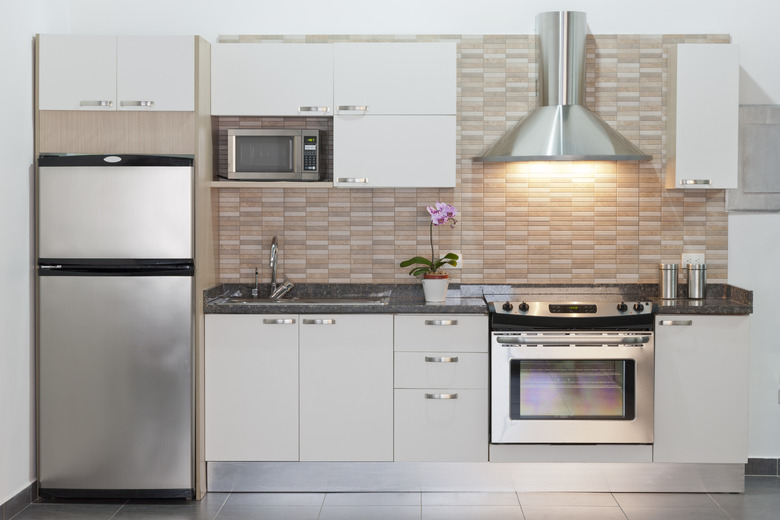How To Use A Refrigerator
Most people in the United States today live with access to a refrigerator, thanks to modern technology and refrigerator efficiency improvements. They're so common, many times homeowners don't think too much about them. They keep our food at a necessary low temperature — 40 degrees F or lower — to keep it from spoiling, and, for most of us, that's good enough. But did you know there are ways to arrange your food products in your refrigerator that will help them remain fresh as long as possible?
Best Refrigerator Shelf Configuration
The upper shelves have the most consistent temperature range of the fridge and are ideal for the main uses of a refrigerator, namely, keeping food cold. Your top shelf (or shelves — this will depend on the design of your particular model of refrigerator) should hold ready-to-eat food.
This includes most dairy products (cheese, yogurt and milk, for example) as well as leftovers, pre-prepared foods like deli meat or salads and condiments like butter. Storing these ingredients on the top shelf helps keep them away from raw ingredients that might introduce bacteria.
Any raw meat should be stored on the bottom shelf. This prevents any dripping from contaminating your other food. Make sure the proteins are individually wrapped or contained so that they also don't contaminate each other. The lower shelves are the coldest part of the refrigerator, according to Good Housekeeping, so eggs, dairy or other items that need to be kept coldest can also be stored here.
Bottom Drawer Use
Most refrigerator models have drawers at the very bottom of the storage space — these are called crisper drawers. These drawers are for produce, like vegetables and fruits. They're designed to keep some of the moisture that helps keep produce fresh. If there are two drawers, it's best practice to separate fruits and vegetables; fruits produce more ethylene, which can cause vegetables to ripen faster than expected. All produce should be washed before being placed into the crisper drawers.
Refrigerator Door Usage
The doors are the warmest part of the refrigerator, so these shelves should house the more temperature-fluctuation proof items, like condiments, juice and pickled ingredients. Many people keep eggs, butter and dairy on the door shelves, but it's actually best to keep these things on the higher shelves inside the refrigerator. You can also re-examine the best refrigerator shelf configuration to ensure that you are keeping food as cold as possible.
On Top of the Refrigerator
Never store anything for consumption on top of the fridge — the heat produced by the refrigerator during its normal chilling operation rises and will ruin any loaves of bread or bottles of wine you're storing up there. If you need to use the space, use it for kitchen appliances, empty lunch boxes or cookbooks.
Not in The Fridge
Some things will fare better outside the refrigerator rather than inside. Tomatoes, for example, will age poorly in the fridge and should be kept on the counter or in a pantry. Avocados and some fruits can be left at room temperature if they need to ripen.
Staples like onions, potatoes and squash do best when stored in a cool dark space — try the bottom of your pantry or a shelf in the garage. Items like flours, nut butters and coffee can be stored at room temperature but will last much longer if stored in the refrigerator.
Freezer Usage Guidelines
Any food that starts frozen is likely to need freezer storage — frozen vegetables, ready-meals or meats will move directly from your grocery shopping bags into your freezer. Any meats you don't intend to eat within a couple days can be frozen to prolong their freshness; thaw them in a week or two to use them as easily as fresh. Likewise, leftovers of soup, chili or foods of a similar texture can be stored in plastic foodware in the freezer for a number of weeks. Simply defrost and serve.
